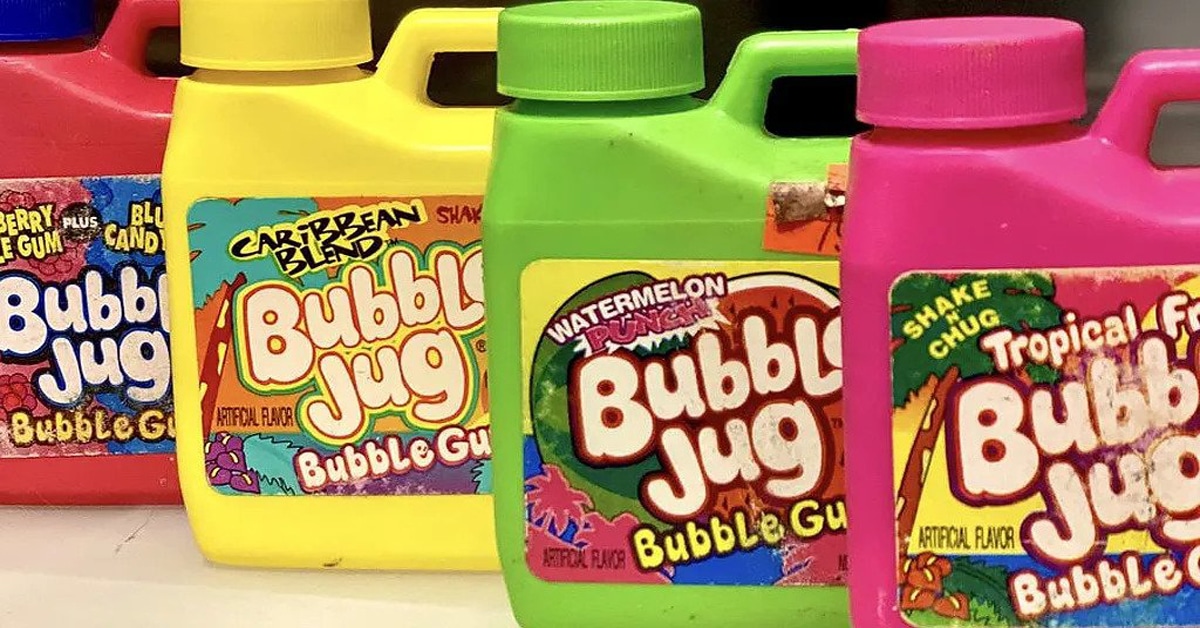90s Gum – A Trip Down Memory Lane with Iconic Gum Brands
In the 1990s, the advent of TV culture and, later, the internet, exposed households to an unprecedented level of fashion, trends, and pop culture. Advertisers had been targeting children and teenagers since the 1960s.
Three decades later, we saw a proliferation of 90s gums and sweets vying for the attention of the nation’s youth. As the market became increasingly saturated, new gum brands and concepts were forced to constantly innovate and differentiate their products to stay relevant.
Please leave a review or any memories of this snack in the comments at the bottom of this page. Thank you!
There’s no doubt that everyone who has a sweet tooth will find it interesting to learn more about 90s gum candies. That is why we explored some of the most popular 90s gum brands in this article.
Names of 90s Gum
- Ouch!
- Bubble Beeper
- Carefree Gum
- Big Red Chewing Gum
- Bubble Tape
- Big League Chew
- Winterfresh
- Fruit Stripe Gum
- Bubble Yum
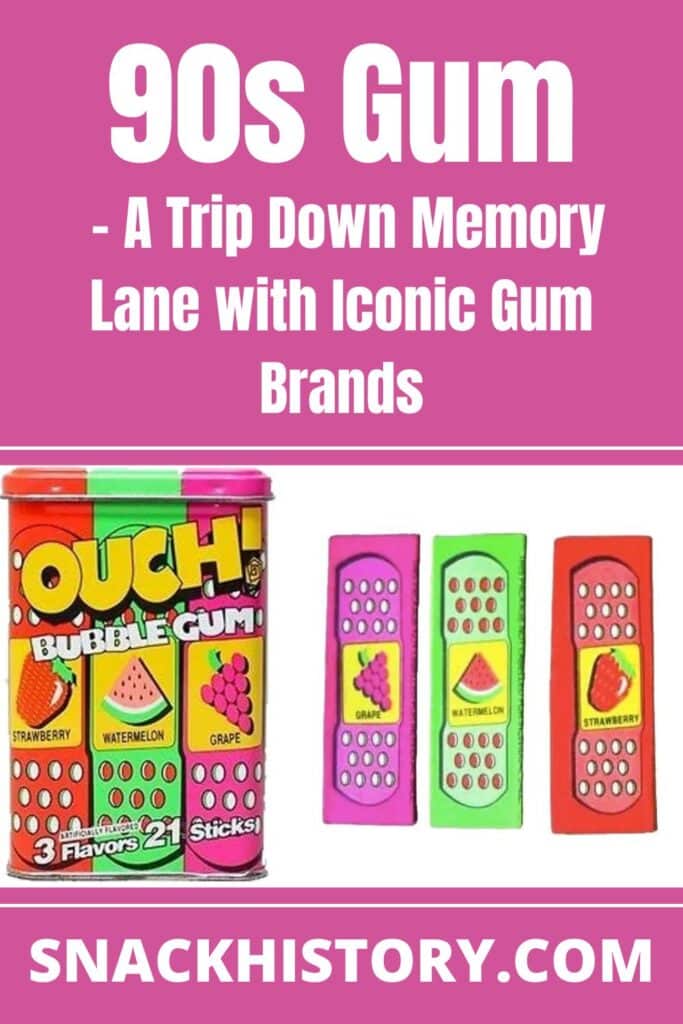
9 Most Popular and Memorable 90s Gum
1. Ouch!
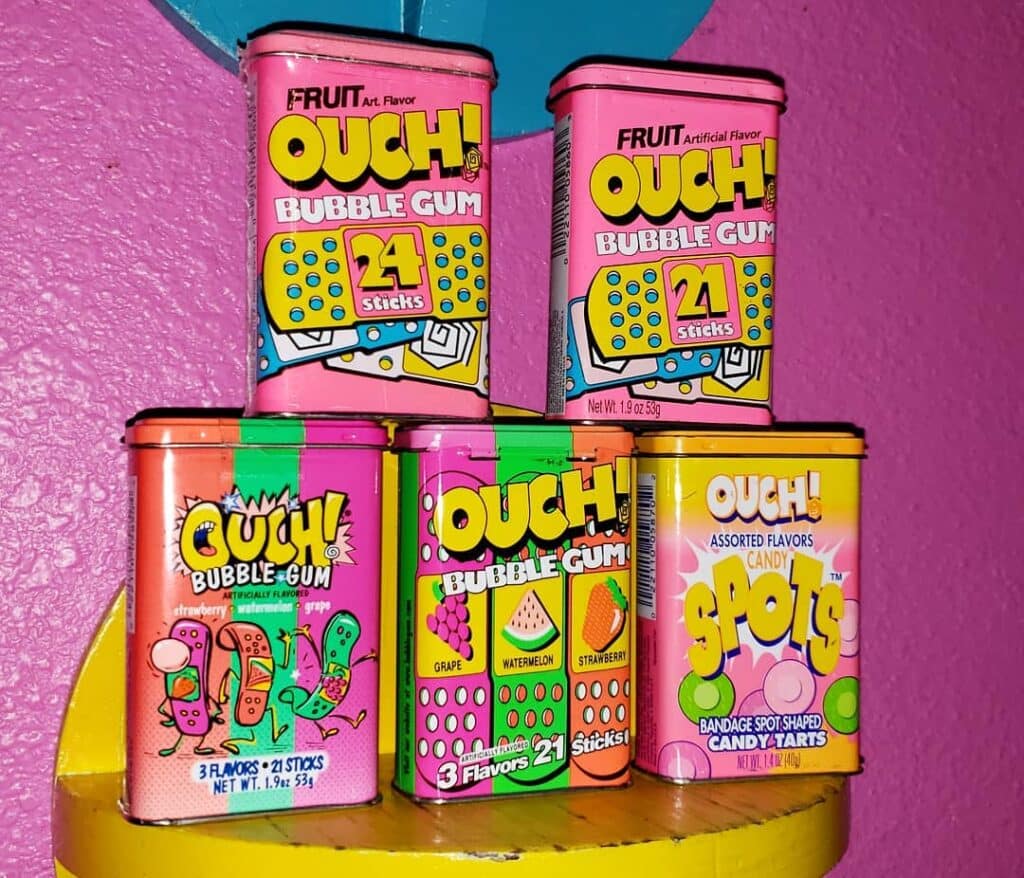
Under the Hubba Bubba brand, the Wm. Wrigley Jr. Company produces sugar-free bubble gum called “Ouch Gum.” It’s a fantastic 90s gum that has survived in our childhood memories. One of the reasons is that the packaging, which was made to resemble an old band-aid tin in technicolor, was extremely appealing to youngsters in the 1990s.
It generally contained a strawberry, watermelon, or grape piece of gum, and each piece had a wrapping that resembled a bright band-aid. The gum was updated in October 2009 with a fresh style and packaging; a bubblegum taste is now also offered. One of a possible twenty collectible games is included in each bundle.
2. Bubble Beeper
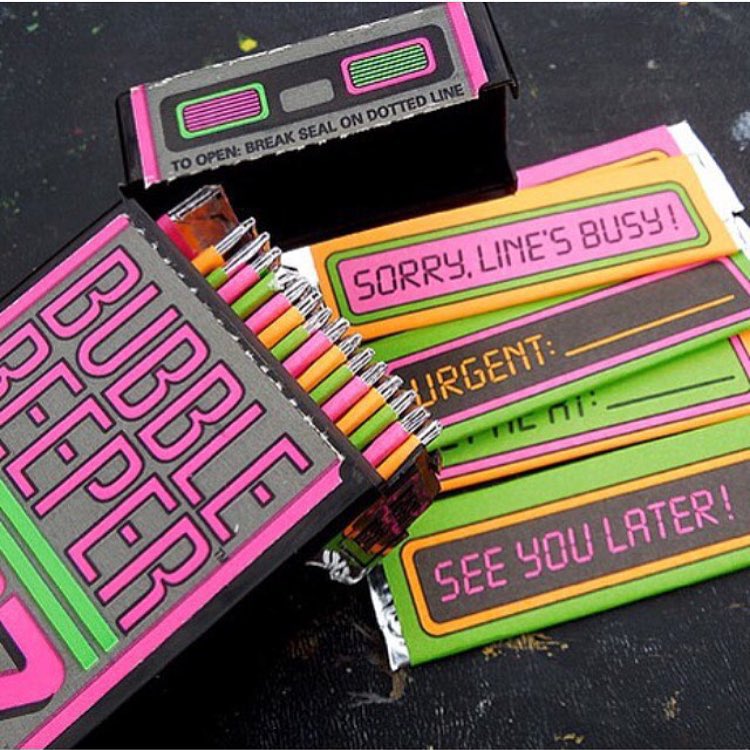
What was it about the 1990s that required gum to be hidden in a container that sort of resembled another object? The Bubble Beeper was designed to look like a typical beeper from the 1990s. Some of the packaging was hard plastic with a hook on the back that could be hooked to your pants and used to carry the gum around like a kid gum vendor. Each piece of gum also came with a wrapper that had a word related to beepers on it. Some of these wrappers even allowed for writing if you wanted to share your gum.
3. Carefree Gum
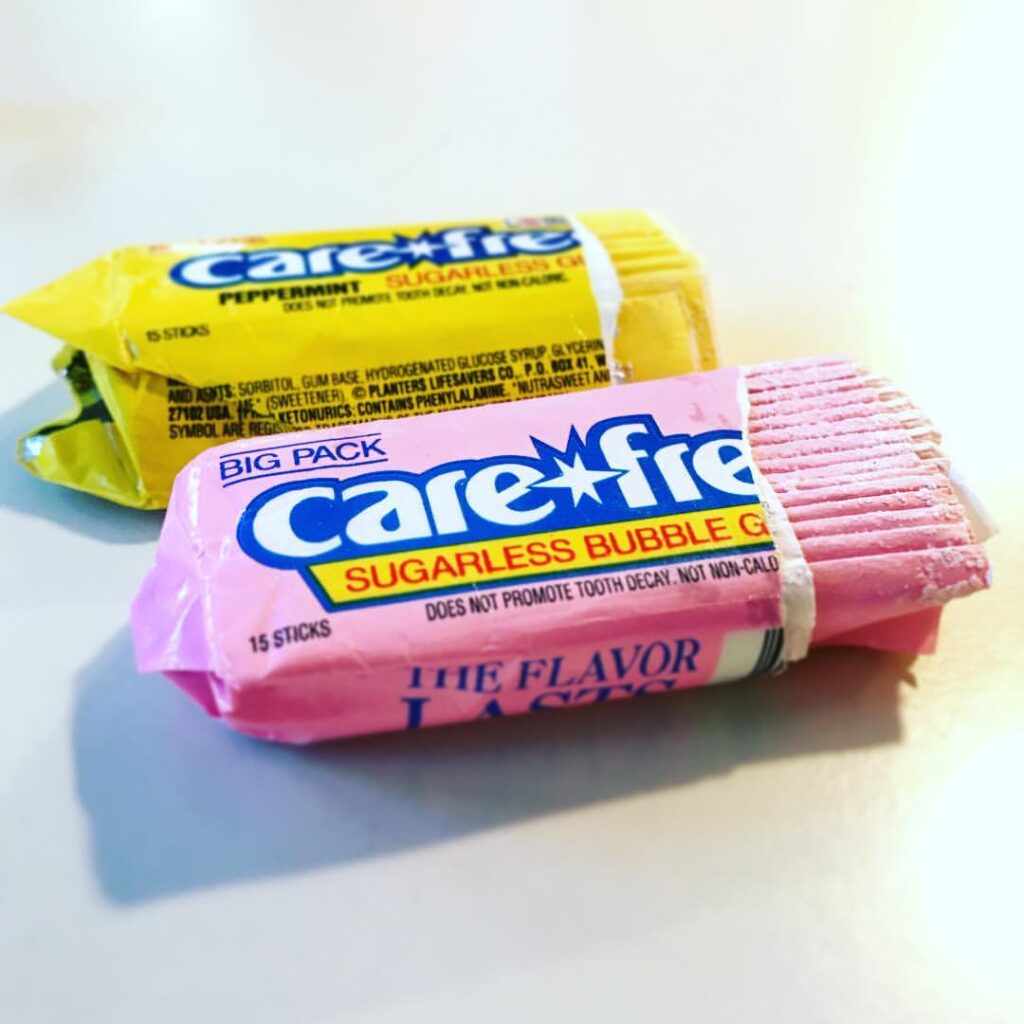
Carefree, sugar-free gum from the 1990s is no longer manufactured. Carefree gum was no stranger to the sugar-free craze that swept the nation in the 1990s. After all, that was its whole selling point. Although they claim in their advertising that “the flavor lasts,” the flavor would fade quite soon.
4. Big Red Chewing Gum
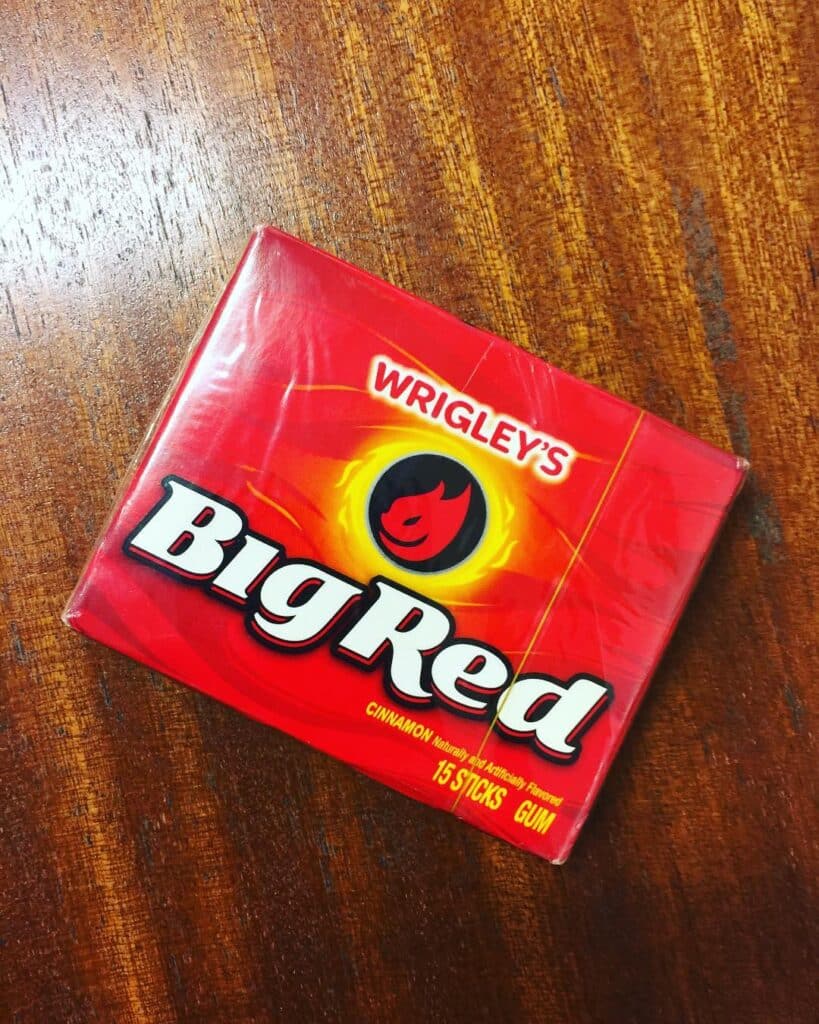
The William Wrigley Jr. Company first produced Big Red, a chewing gum with a cinnamon taste, in 1975. Big Red was a popular candy in the United Kingdom and Ireland as a souvenir for tourists visiting the United States from the mid-to-late 1990s. Australia saw the early to mid-1980s debut of Big Red as well, although production stopped at the end of the decade.
It was re-released at the end of 2007. Mexico, Luxembourg, Belgium, Latvia, Norway, Poland, Slovenia, New Zealand, and portions of Sweden are other countries where it is sold. Its taste is intended to be fiery. Despite not being a sugar-free gum, Wrigley’s switched out some of the sugar in 2003 in the United States with artificial sweeteners such as aspartame and Ace K.
5. Bubble Tape
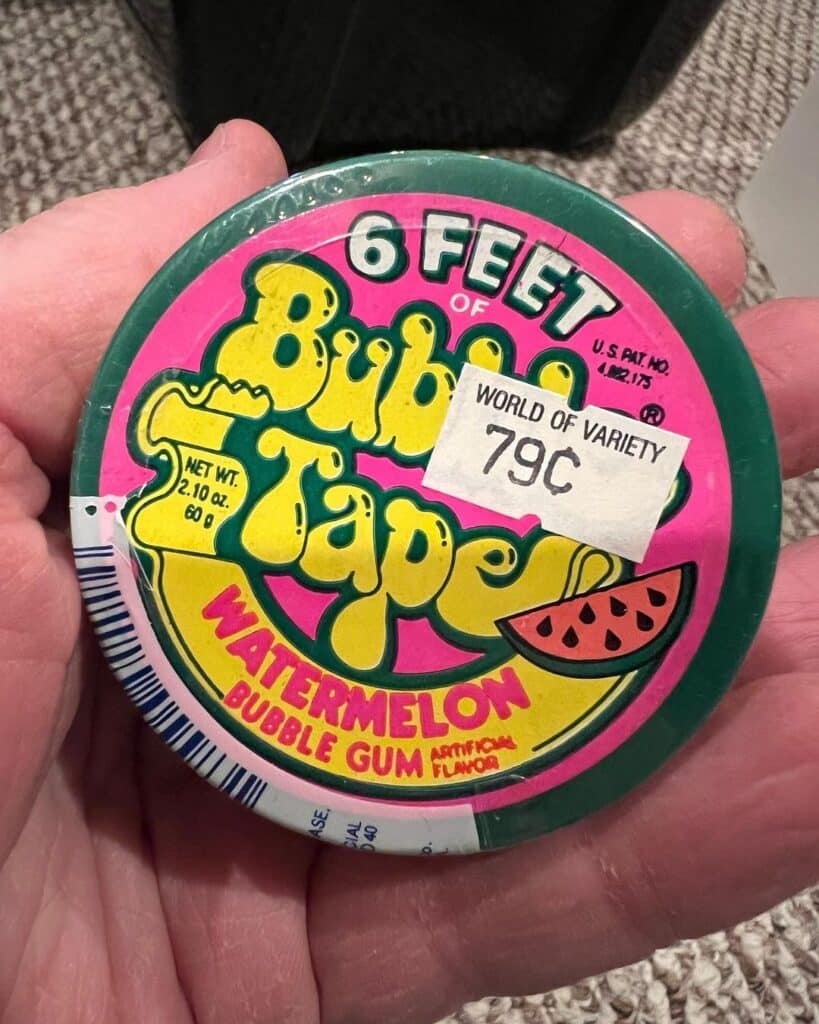
A Hubba Bubba variety called Bubble Tape was first developed in 1988 by the Wm. Wrigley Jr. Company. In all of its remarkable tape-likeness, bubble tape is still in use today. In a hockey-puck-sized circular plastic “tape” dispenser, there were six feet of spiral-wrapped bubblegum.
The early 1990s advertising specifically targeted children who were tired of bothersome adults with the phrase “for you, not them,” which contributed to the popularity of this gum among young people. And it succeeded. Everyone loved the 90s gum, Bubble Tape.
Due to its distinctive packaging and direct marketing to adolescent children, it reached its peak popularity in the early 1990s. Over 1 million containers of Bubble Tape were produced each week at the height of its production.
The majority of flavors of Bubble Tape are from the Hubba Bubba regular brand of chewing gum. The list includes original green apple, unsweet watermelon, Cotton Candy Strapping in Sour, blue raspberry, strawberry Fruit Gushing, Juicy Triple Mix, and others.
6. Big League Chew
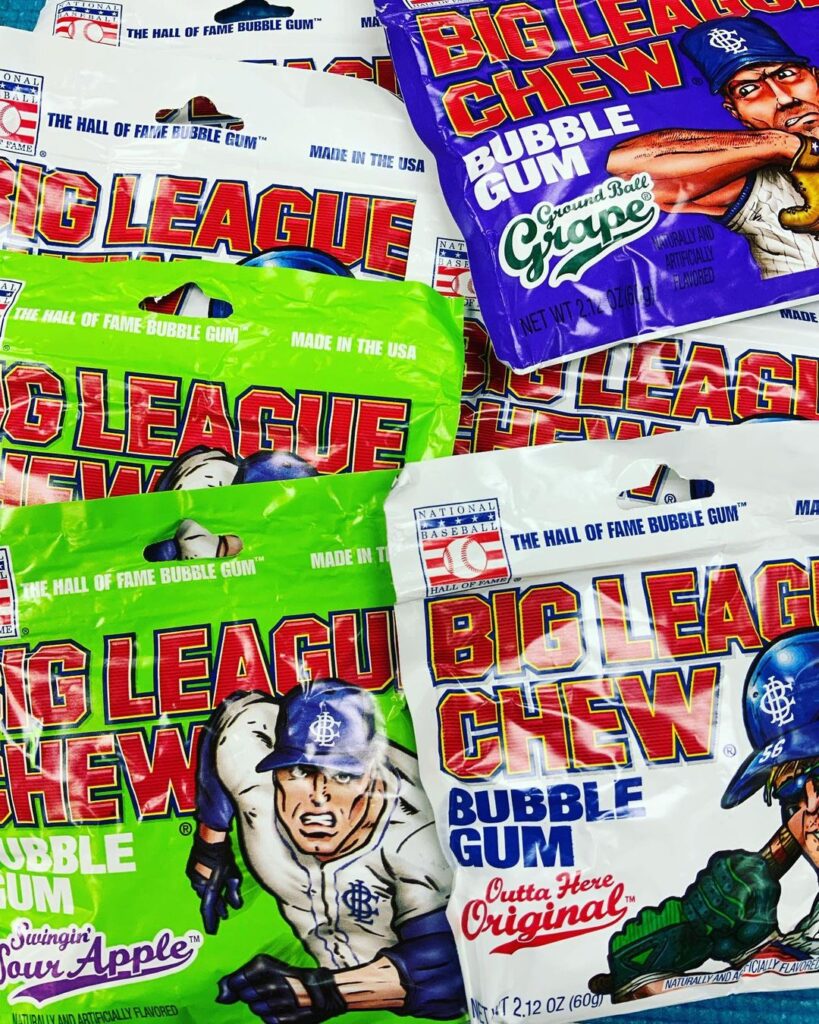
Big League Chew was initially released in the 1980s, but it was still popular in the 1990s, especially among people who either played baseball or had to watch their siblings play the game. Rob Nelson, a left-handed pitcher for the Portland Mavericks, and Todd Field, a bat boy and aspiring director, developed the bubble gum brand known as “Big League Chew” in the United States.
“You’re in the big leagues when you’re into Big League Chew!” was the initial advertising tagline used during the 1980s. The Baseball Hall of Fame has officially endorsed it, and it is being marketed as “Hall of Fame Bubble Gum.”
A fellow Maverick and former All-Star for the New York Yankees, Jim Bouton then proposed it to the Wrigley Company, the longstanding owners of the Chicago Cubs, as a humorous parody of the tobacco-chewing custom that was popular among athletes in the 1970s. Since its introduction in 1980, Big League Chew has sold more than 800 million packets.
Big League Chew was first offered in May 1980, with the same classic pink hue as other well-known brands of bubble gum. It quickly became synonymous with 1990s gum. Actually, regular sheets of bubble gum were used to create the first shredded R&D concept samples of the product using an ordinary office paper shredder.
Ford Gum & Machine Company moved manufacturing from Mexico and now produces it in the US in Akron, New York, after acquiring the distribution rights from Wrigley at the end of 2010.
7. Winterfresh
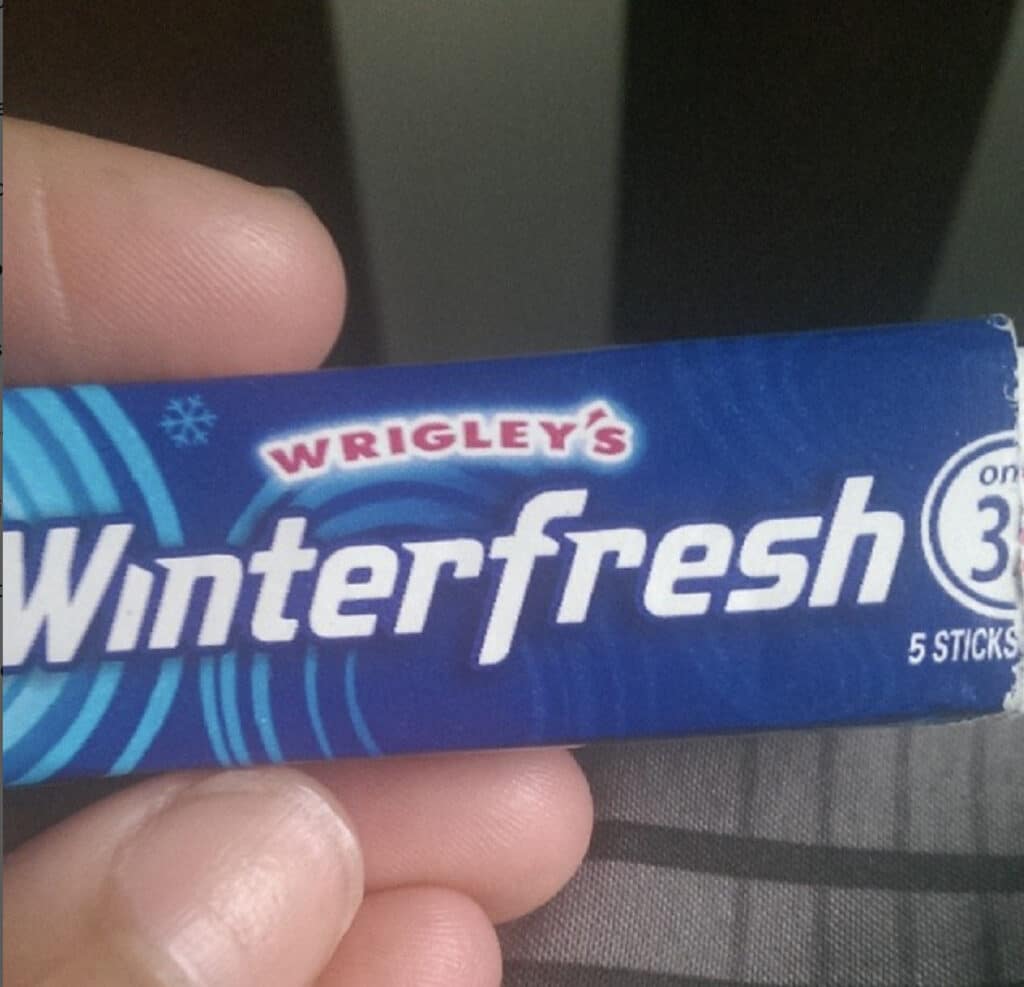
In 1994, Wrigley introduced Winterfresh Gum to the market as an alternative to the Big Red brand. It was all about having ice, and long-lasting breath. You most likely purchased a pack or two of Winterfresh 90s gum candy if you had a date coming up.
As of 2004, this 90s gum featured two different packages for the winter market. Winterfresh ran a series of advertisements from 2006 to 2008, dubbed “Cool Breath Power,” the majority of which were “Attraction Chronicles.” The narrator of these ads, which were aimed at the teen market, would frequently provide odd love advice in an equally unusual setting.
Karl Ackermann served as the film’s director, artist, and animator, while Milky Elephant created the animation in an old-school Macromedia Flash style. Some have compared the animation to the early seasons of South Park.
8. Fruit Stripe Gum
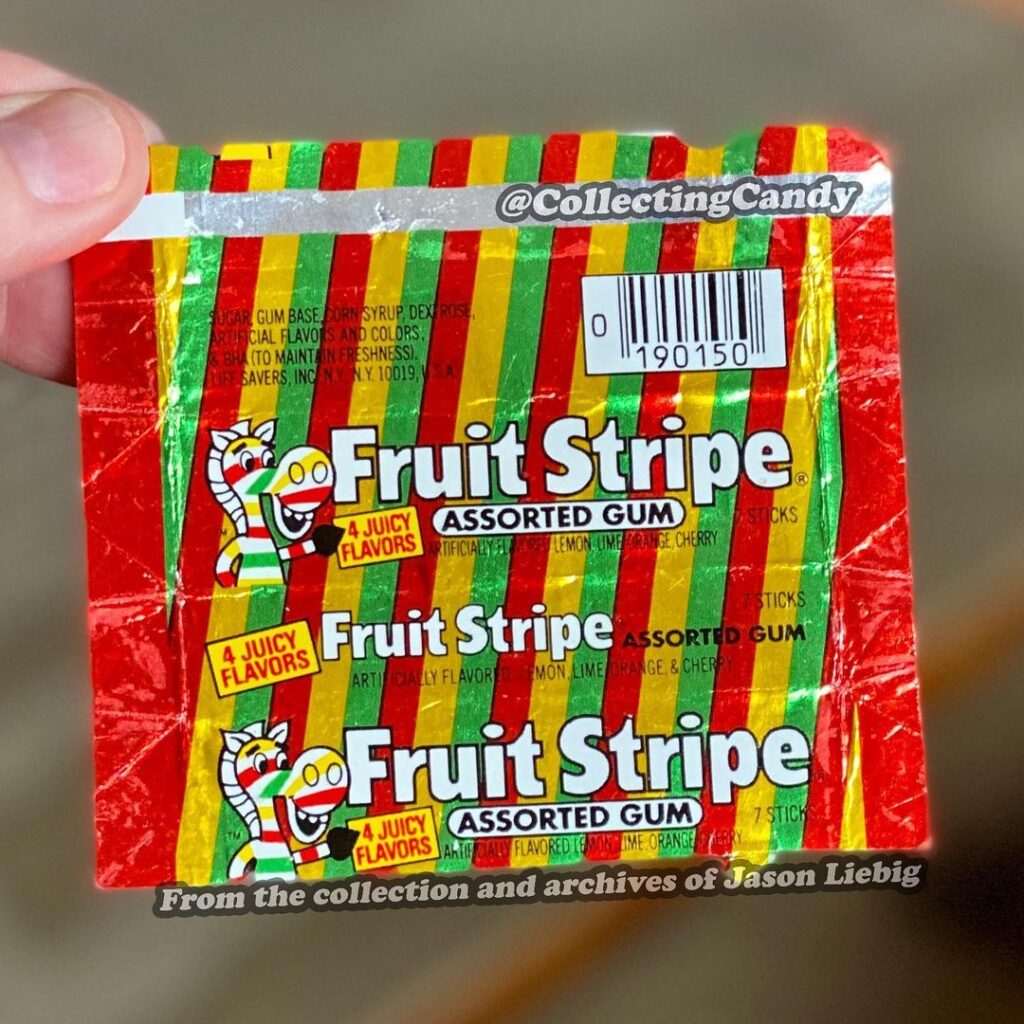
The simple yet catchy Fruit Stripe gum, which also functions as a temporary tattoo, is what made the Fruit Stripe popular 90s gum. Chewing gum was created for the first time in the 1960s, but it truly gained popularity in the 1990s and became iconic 90s gum.
James Parker created “Five Flavor Gum,” which was initially sold by the Beech-Nut Corporation. In 2003, The Hershey Company sold the Fruit Stripe brand to Farley’s & Sathers Candy Company. In 2012, Farley’s & Sathers and Ferrara Pan united to establish the Ferrara Candy Company, which in 2017 became a fully owned subsidiary of Ferrero. Fruit Stripe Gummy Candy, a brand-new kind, was released in 2022.
The Fruit Stripe Gum Man, an anthropomorphic gum pack with limbs and a face, served as the product’s spokesperson. The Stripes Family Animals, which comprised a zebra, tiger, elephant, and mouse, appeared in a coloring book, plush toys, and other forms of advertising.
Fruit Stripe donated $5 from every Jumbo Pack and Variety Multipack sold in 1996 to the World Wildlife Fund for the protection of endangered species and their habitats, amounting to almost $100,000.
9. Bubble Yum
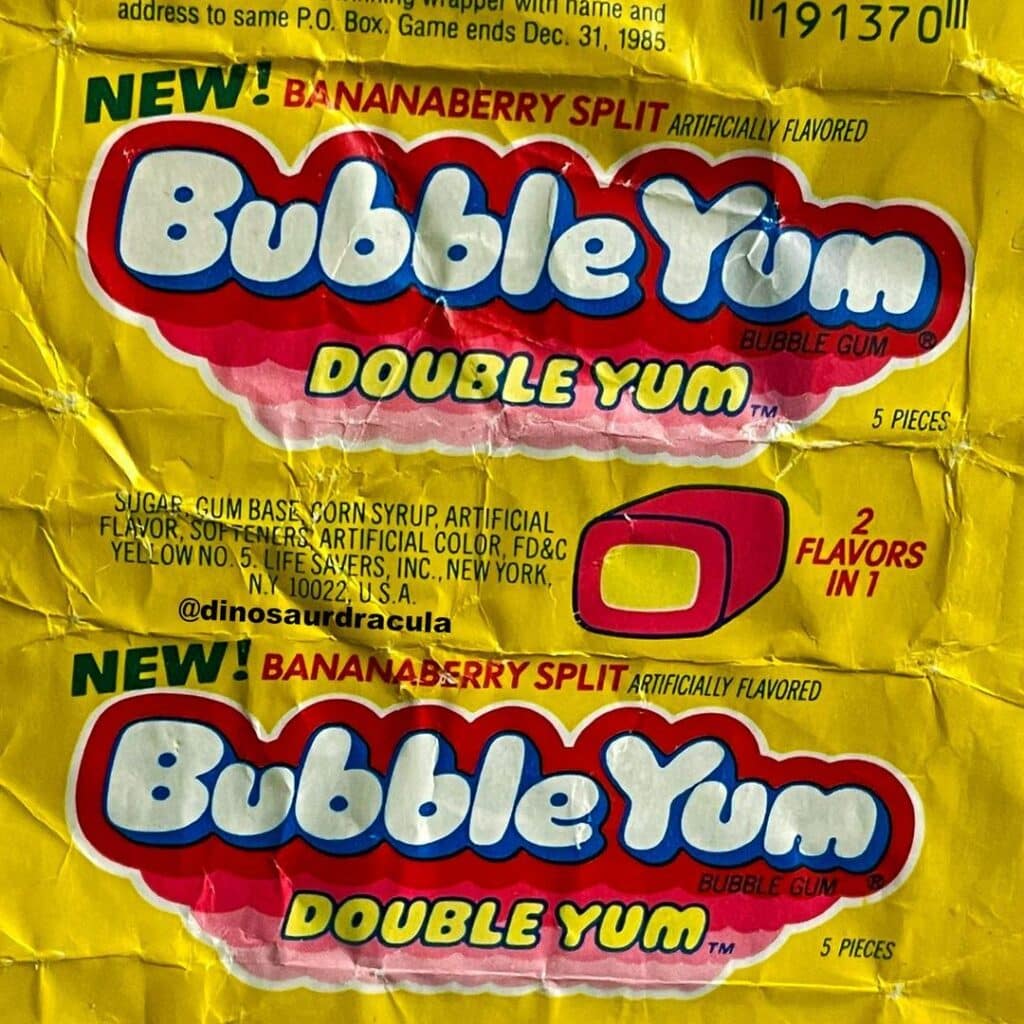
Bubble Yum, the first soft chewing gum ever produced, was originally offered by the Life Savers Company in 1975. In Fisk, Missouri, a housewife invented it and gave it the moniker “rubber bubblegum.” She immediately sold the formula to the St. Louis-based Life Savers confectionery business. Even though it didn’t last very long, it was indeed one of the most beloved 90s gum. Bubble Yum was definitely the gum to buy if you wanted some soft gum and a higher possibility of blowing bubbles.
Currently, the Hershey Company markets bubble gum under the name Bubble Yum. To put an end to the myth (that the spider eggs were in the gum product) and regain the public’s trust, the Life Savers Company responded to the situation with an official full-page denial that was published in eminent American newspapers.
The gum’s sales quickly overtook those of Life Savers candies, making it the most widely used brand of bubble gum. Life Savers were purchased by Nabisco in 1981, while Bubble Yum was purchased by The Hershey Company in 2000.
Bottom Line
We’ve just explored some of the most loved 90s gum. As an eye-catching appearance may go a long way in getting chewing gum or bubble gum pulled from the packed shelves at the candy store or supermarket, novelty packaging became a big part of this “gum and candy race.”
The 90s gum and candy industries primarily imitated the society around them, adopting trends that ranged from the sugar-free lifestyle gums made for adults to the novelties that catered to the more sophisticated adolescent and preteen audience.

Nato is a content writer and researcher with a background in psychology. She’s passionate about writing about the candy industry and exploring the cultural significance of sweets and treats. She believes that the stories behind our favorite snacks can reveal a great deal about our values.
Please leave a review or any memories of this snack in the comments below. Thank you!
Click here for a full A-Z list of Snacks and Candy
